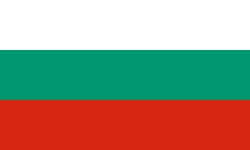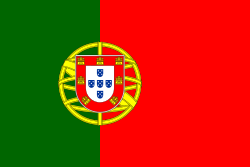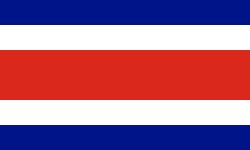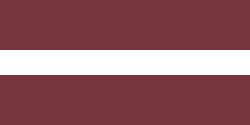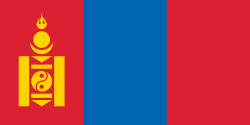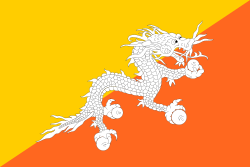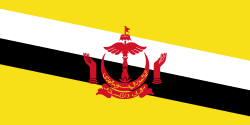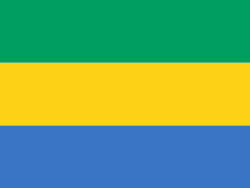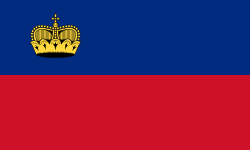Letní olympijské hry 1996
| XXVI. letní olympijské hry | |
|---|---|
| Místo konání | Atlanta, USA |
| Počet zemí | 197 |
| Počet sportovců | 10 281 |
| Soutěže | 271 |
| Zahájení | 19. července 1996 |
| Zakončení | 4. srpna 1996 |
| Slib za sportovce | Teresa Edwards |
| Slib za rozhodčí | Hobie Billingsley |
| Pochodeň | Muhammad Ali |
| Stadion | Centennial Olympic Stadium |
← LOH 1992 LOH 2000 → | |
XXVI. letní olympijské hry se uskutečnily v době od 19. července až do 4. srpna 1996 v Atlantě v USA. Zúčastnilo se jich 10 281 sportovců ze 197 zemí. Soutěžilo se v 271 disciplínách.
V průběhu volby pořadatelského města se hodně spekulovalo o tom, zda by čest hostit letní olympiádu neměly mít Athény (na počest stého výročí prvních novodobých olympijských her). Volba ale nakonec rozhodla pro Atlantu, americké město ve státě Georgie.
Hry tradiční formulkou otevřel prezident Bill Clinton a olympijský oheň zapálil bývalý americký boxer Muhammad Ali, v té době postižený Parkinsonovou chorobou.
Atmosféra olympiády byla poznamenána teroristickým útokem 27. července 1996, kdy výbuch bomby v olympijském parku zabil jednoho člověka a 110 lidí zranil. Vlajky visely na půl žerdi, ale soutěže nebyly přerušeny.
Nejlepším výkonem celých her se 1. srpna 1996 stala fenomenální dvoustovka sprintera Michaela Johnsona v čase nového světového rekordu 19,32 s. Ten byl o 2 setiny sekundy (19,30 s.) překonán až o 12 let později jamajským sprinterem Usainem Boltem na OH v Pekingu.
Sporty
Počet medailí podle údajů mezinárodního olympijského výboru
| Pořadí | Země | Zlato | Stříbro | Bronz | Celkem |
| 1 | 44 | 32 | 25 | 101 | |
| 2 | 26 | 21 | 16 | 63 | |
| 3 | 20 | 18 | 27 | 65 | |
| 4 | 16 | 22 | 12 | 50 | |
| 5 | 15 | 7 | 15 | 37 | |
| 6 | 13 | 10 | 12 | 35 | |
| 7 | 9 | 9 | 23 | 41 | |
| 8 | 9 | 8 | 8 | 25 | |
| 9 | 9 | 2 | 12 | 23 | |
| 10 | 7 | 15 | 5 | 27 | |
| 11 | 7 | 5 | 5 | 17 | |
| 12 | 7 | 4 | 10 | 21 | |
| 13 | 5 | 6 | 6 | 17 | |
| 14 | 4 | 7 | 9 | 20 | |
| 15 | 4 | 5 | 10 | 19 | |
| 16 | 4 | 4 | 0 | 8 | |
| 17 | 4 | 3 | 4 | 11 | |
| 18 | 4 | 3 | 0 | 7 | |
| 19 | 4 | 1 | 1 | 6 | |
| 19 | 4 | 1 | 1 | 6 | |
| 21 | 3 | 11 | 8 | 22 | |
| 22 | 3 | 7 | 5 | 15 | |
| 23 | 3 | 6 | 5 | 14 | |
| 24 | 3 | 4 | 4 | 11 | |
| 25 | 3 | 3 | 9 | 15 | |
| 26 | 3 | 2 | 1 | 6 | |
| 27 | 3 | 1 | 1 | 5 | |
| 28 | 3 | 0 | 1 | 4 | |
| 29 | 2 | 4 | 2 | 8 | |
| 30 | 2 | 2 | 3 | 7 | |
| 31 | 2 | 2 | 2 | 6 | |
| 32 | 2 | 1 | 3 | 6 | |
| 33 | 2 | 1 | 2 | 5 | |
| 34 | 2 | 0 | 1 | 3 | |
| 34 | 2 | 0 | 1 | 3 | |
| 36 | 1 | 8 | 6 | 15 | |
| 37 | 1 | 6 | 8 | 15 | |
| 38 | 1 | 4 | 3 | 8 | |
| 39 | 1 | 3 | 2 | 6 | |
| 40 | 1 | 2 | 1 | 4 | |
| 41 | 1 | 1 | 2 | 4 | |
| 41 | 1 | 1 | 2 | 4 | |
| 43 | 1 | 1 | 1 | 3 | |
| 43 | 1 | 1 | 1 | 3 | |
| 45 | 1 | 1 | 0 | 2 | |
| 45 | 1 | 1 | 0 | 2 | |
| 47 | 1 | 0 | 1 | 2 | |
| 47 | 1 | 0 | 1 | 2 | |
| 49 | 1 | 0 | 0 | 1 | |
| 49 | 1 | 0 | 0 | 1 | |
| 49 | 1 | 0 | 0 | 1 | |
| 49 | 1 | 0 | 0 | 1 | |
| 49 | 1 | 0 | 0 | 1 | |
| 54 | 0 | 2 | 1 | 3 | |
| 55 | 0 | 2 | 0 | 2 | |
| 55 | 0 | 2 | 0 | 2 | |
| 57 | 0 | 1 | 2 | 3 | |
| 58 | 0 | 1 | 1 | 2 | |
| 58 | 0 | 1 | 1 | 2 | |
| 58 | 0 | 1 | 1 | 2 | |
| 61 | 0 | 1 | 0 | 1 | |
| 61 | 0 | 1 | 0 | 1 | |
| 61 | 0 | 1 | 0 | 1 | |
| 61 | 0 | 1 | 0 | 1 | |
| 61 | 0 | 1 | 0 | 1 | |
| 61 | 0 | 1 | 0 | 1 | |
| 61 | 0 | 1 | 0 | 1 | |
| 68 | 0 | 0 | 2 | 2 | |
| 68 | 0 | 0 | 2 | 2 | |
| 68 | 0 | 0 | 2 | 2 | |
| 71 | 0 | 0 | 1 | 1 | |
| 71 | 0 | 0 | 1 | 1 | |
| 71 | 0 | 0 | 1 | 1 | |
| 71 | 0 | 0 | 1 | 1 | |
| 71 | 0 | 0 | 1 | 1 | |
| 71 | 0 | 0 | 1 | 1 | |
| 71 | 0 | 0 | 1 | 1 | |
| 71 | 0 | 0 | 1 | 1 | |
| 71 | 0 | 0 | 1 | 1 | |
| Celkem | 271 | 273 | 298 | 842 | |
|---|---|---|---|---|---|
Účastnické země
Her se zúčastnili sportovci z celkového počtu 197 zemí. Z nich se 24 účastnilo letních olympijských her poprvé (z toho 11 nástupnických zemí po rozpadu SSSR).
Čísla v závorkách udávají počty sportovců zastupujících zemi.
- Účastnické země
- Počet sportovců zastupujících jednotlivé země
|
|
|
Česko na LOH 1996
Externí odkazy
 Obrázky, zvuky či videa k tématu Letní olympijské hry 1996 na Wikimedia Commons
Obrázky, zvuky či videa k tématu Letní olympijské hry 1996 na Wikimedia Commons - www.olympic.cz
- (anglicky) Oficiální výsledky LOH 1996 na Olympedia[nedostupný zdroj]
Média použitá na této stránce
Olympic Rings without "rims" (gaps between the rings), As used, eg. in the logos of the 2008 and 2016 Olympics. The colour scheme applied here was specified in 2023 guidelines.
Olympic Rings without "rims" (gaps between the rings), As used, eg. in the logos of the 2008 and 2016 Olympics. The colour scheme applied here was specified in 2023 guidelines.
Vlajka České republiky. Podoba státní vlajky České republiky je definována zákonem České národní rady č. 3/1993 Sb., o státních symbolech České republiky, přijatým 17. prosince 1992 a který nabyl účinnosti 1. ledna 1993, kdy rozdělením České a Slovenské Federativní republiky vznikla samostatná Česká republika. Vlajka je popsána v § 4 takto: „Státní vlajka České republiky se skládá z horního pruhu bílého a dolního pruhu červeného, mezi něž je vsunut žerďový modrý klín do poloviny délky vlajky. Poměr šířky k její délce je 2 : 3.“
Variant version of a flag of Japan, used between January 27, 1870 and August 13, 1999 (aspect ratio 7:10).
Used color: National flag | South African Government and Pantone Color Picker
| zelená | rendered as RGB 0 119 73 | Pantone 3415 C |
| žlutá | rendered as RGB 255 184 28 | Pantone 1235 C |
| červená | rendered as RGB 224 60 49 | Pantone 179 C |
| modrá | rendered as RGB 0 20 137 | Pantone Reflex Blue C |
| bílá | rendered as RGB 255 255 255 | |
| černá | rendered as RGB 0 0 0 |
Zelený pruh má znázorňovat většinové katolické obyvatelsto Irska, oranžový pruh reprezentuje protestantskou menšinu a bílý pruh uprostřed znázorňuje mír a harmonii mezi nimi.
The civil ensign and flag of Belgium. It is identical to Image:Flag of Belgium.svg except that it has a 2:3 ratio, instead of 13:15.
Flag of Jamaica. “The sunshine, the land is green, and the people are strong and bold” is the symbolism of the colours of the flag. GOLD represents the natural wealth and beauty of sunlight; GREEN represents hope and agricultural resources; BLACK represents the strength and creativity of the people. The original symbolism, however, was "Hardships there are, but the land is green, and the sun shineth", where BLACK represented the hardships being faced.
Finská vlajka
bendera Indonesia
Flag of Serbia and Montenegro, was adopted on 27 April 1992, as flag of Federal Republic of Yugoslavia (1992-2003).
Flag of Iran. The tricolor flag was introduced in 1906, but after the Islamic Revolution of 1979 the Arabic words 'Allahu akbar' ('God is great'), written in the Kufic script of the Qur'an and repeated 22 times, were added to the red and green strips where they border the white central strip and in the middle is the emblem of Iran (which is a stylized Persian alphabet of the Arabic word Allah ("God")).
The official ISIRI standard (translation at FotW) gives two slightly different methods of construction for the flag: a compass-and-straightedge construction used for File:Flag of Iran (official).svg, and a "simplified" construction sheet with rational numbers used for this file.
Při zobrazení tohoto souboru lze snadno přidat orámování
Flag of Portugal, created by Columbano Bordalo Pinheiro (1857–1929), officially adopted by Portuguese government in June 30th 1911 (in use since about November 1910). Color shades matching the RGB values officially reccomended here. (PMS values should be used for direct ink or textile; CMYK for 4-color offset printing on paper; this is an image for screen display, RGB should be used.)
The national flag of Kingdom of Thailand; there are total of 3 colours:
- Red represents the blood spilt to protect Thailand’s independence and often more simply described as representing the nation.
- White represents the religion of Buddhism, the predominant religion of the nation
- Blue represents the monarchy of the nation, which is recognised as the centre of Thai hearts.
Flag of Namibia
Chinese Taipei Olympic Flag. According to the official website of Chinese Taipei Olympic Committee, Blue Sky(circle) & White Sun(triangles) above the Olympic rings is neither the National Emblem of the Republic of China, nor the Party Emblem of Kuomintang (KMT), but a design in between, where the triangles do not extend to the edge of the blue circle, as registered at International Olympic Committee in 1981 and digitally rendered in 2013. Besides, the blue outline of the five-petaled plum blossom is broader than the red one. Moreover, the CMYK code of the blue one and the Blue Sky & White Sun is "C100-M100-Y0-K0", and different from the Olympic rings (C100-M25-Y0-K0). Note that it's the only version recognized by IOC.
Flag of Georgia used from 1990 to 2004, with slightly different proportions than the 1918 to 1921 flag.
Flag of Tunisia until 1999.
Vlajka Angoly
| Flag of Bolivia* | |
|---|---|
| country | Template:I18n/Republic of Bolivia |
| used by | Bolivia |
| from | 1851 |
| until | Present |
| created by | Government of Bolivia |
| format | 15:22 |
| shape | rectangular |
| colours | červená, žlutá, zelená
flag has 3 horizontal stripes |
| other characteristics | A horizontal tricolor of red, yellow and green. |
The flag of the Dominican Republic has a centered white cross that extends to the edges. This emblem is similar to the flag design and shows a bible, a cross of gold and 6 Dominican flags. There are branches of olive and palm around the shield and above on the ribbon is the motto "Dios,Patria!, Libertad" ("God, Country, Freedom") and to amiable freedom. The blue is said to stand for liberty, red for the fire and blood of the independence struggle and the white cross symbolized that God has not forgotten his people. "Republica Dominicana". The Dominican flag was designed by Juan Pablo Duarte, father of the national Independence of Dominican Republic. The first dominican flag was sewn by a young lady named Concepción Bona, who lived across the street of El Baluarte, monument where the patriots gathered to fight for the independence, the night of February 27th, 1844. Concepción Bona was helped by her first cousin María de Jesús Pina.
The national and official state flag of Haiti; arms obtained from File:Coat of arms of Haiti.svg. The civil flag can be found at here.
Při zobrazení tohoto souboru lze snadno přidat orámování
The Flag of Iceland.
- Horizontal aspect ratio: 7:1:2:1:14;
- Vertical aspect ratio: 7:1:2:1:7.
Flag of Laos
Flag of Liechtenstein
Flag of Maldives. The colours used are Pantone 186 C for red and Pantone 348 C for green.
The national flag of Nauru. Pantone 280c (Blue) and Pantone 123c (Yellow). On Pantone's official website these colours have the hexadecimal codes of #012169 and #FFC72C.
Flag of the Ivory Coast, written by Jon Harald Søby, modified by Zscout370. The colors match to what is reported at http://fotw.vexillum.com/flags/ci.html.
Flag of Senegal
The proportions of this flag are 3:2; however, there is no official definition for the correct proportions and also 5:3 is widely used.
Flag of São Tomé and Príncipe
Flag of Georgia used from 1990 to 2004, with slightly different proportions than the 1918 to 1921 flag.
Made by author of Xramp, first uploaded by Denelson83 as Flag of Ecuador.svg, modifications by Husunqu.
Flag of South Korea from 21 February 1984 to 15 October 1997, when the exact colors were specified into their shades.
Belize Flag before August 28, 2019 Standardzations SVG from 3 September 2019 revision by FDRMRZUSA
Autor: Dufo, Licence: CC BY-SA 3.0
Olympische Sommerspiele 1996 — Anzahl der Athleten
The flag of Aruba
Flag of Afghanistan, used from 1992 to 2001.
Flag of Tunisia until 1999.
Flag of Burkina Faso
Flag of the Ivory Coast, written by Jon Harald Søby, modified by Zscout370. The colors match to what is reported at http://fotw.vexillum.com/flags/ci.html.
Flag of Saint Lucia, 1979
Flag of Lesotho 1987-2006
This is the flag of Bahrain used from 5 October 1950 until 14 February 2002. The base image is from the 2002 CIA World Factbook (mirrored at UMSL). I have removed the border and recolored the red section according to Image:Flag of Bahrain.svg.
Flag of the Comoros (1992-1996).
State Flag of Venezuela 1930-2006, New flag was introduced 9 March 2006.
Flag of Ethiopia (1996-2009)
The former flag of Rwanda (1961–2001). Commonly refered to as the "R" flag.
Flag of Belarus 1995-2012
Flag of Syria. Originally flag of the Syria Revolution (from 2011), de facto flag of Syria beginning December 2024, official beginning March 2025.
Former version of the flag of Paraguay
Flag of Serbia and Montenegro, was adopted on 27 April 1992, as flag of Federal Republic of Yugoslavia (1992-2003).
The flag of Guam, courtesy an e-mail from the author of xrmap. Modifications by Denelson83.
Former Iraqi flag, used from 1991 to 2004.
This is the flag of the Cayman Islands, prior to 1999 (It seems this version is still in use). The base pattern is from HK Blue Ensign and the arms are from the blue ensign. The FOTW was used for the position of the arms.
The three stars mean Grand Cayman(76miles), Cayman Brac(14miles), and Little Cayman(10miles).The flag of San Marino, before the 2011 standardization
Flag of Turkmenistan from 1992 to 1997, with different ratio and slightly different symbols.
1910 Flag of Bermuda (with smaller coat of arms)























